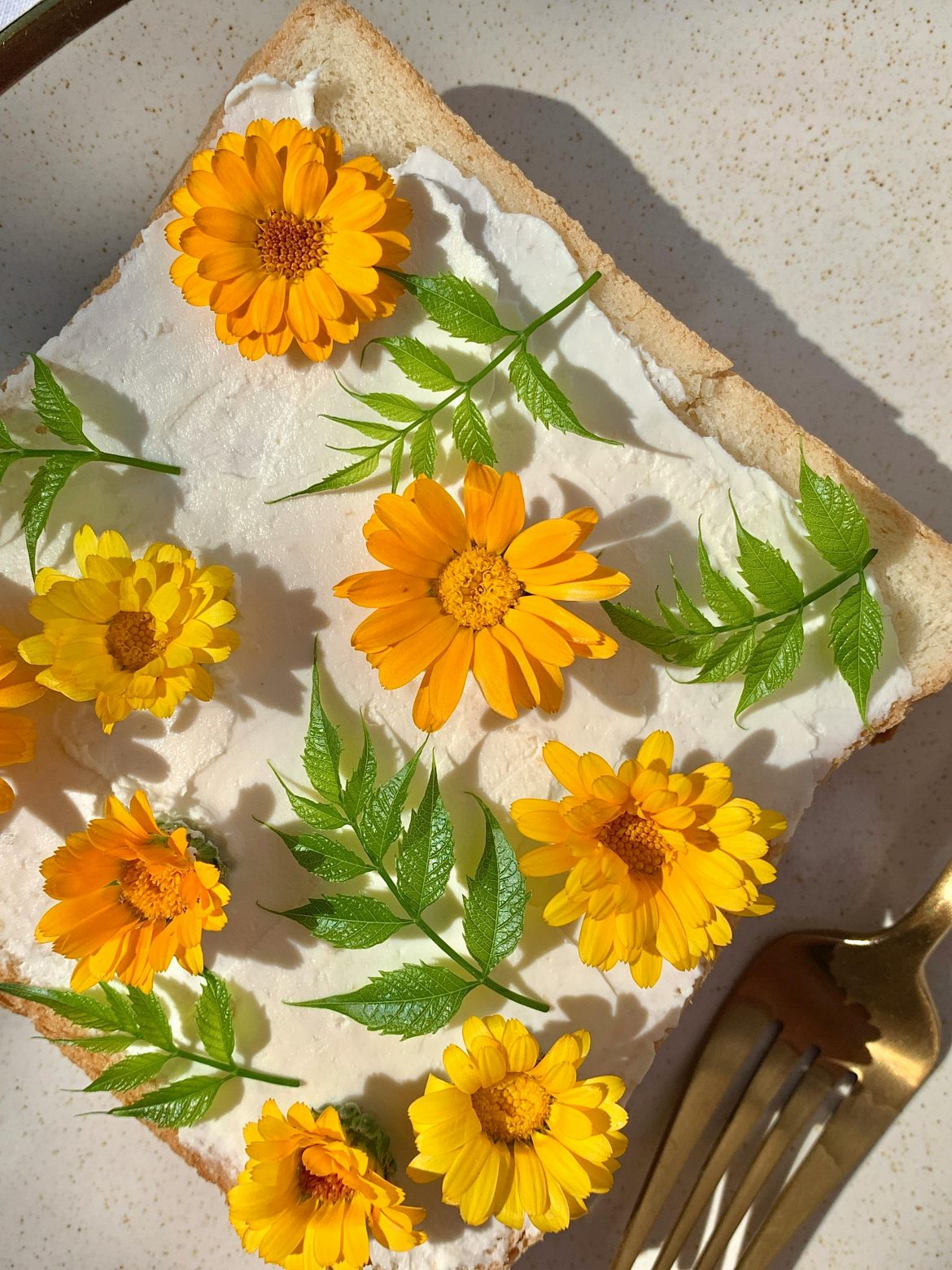Edible flowers can be used in many dishes, from novel pickles to beautified cocktails. Many of them have a nuanced flavour profile that can really elevate your dish, expanding your kitchen repertoire from home cook to pro chef. However, not every bloom is edible and belongs in a vase, not your fridge.
Discover ways to prepare edible flowers, how to cook with them, and storage tips.
Choosing and Preparing Edible Flowers
Not every bloom is meant for consumption. Here are a few tips for choosing and preparing edible flowers:
- Firstly, educate yourself before picking any old bloom
- To be safe, grow a range of edible flowers in your own garden for harvesting
- A good rule of thumb: fruit and vegetable flowers are mostly safe to consume (but always double-check before eating)
- Always harvest organically-grown and pesticide-free flowers
- Avoid florist flowers
- Wash thoroughly before consuming to avoid harmful contamination
- Store freshly harvested (and washed) flowers in an airtight container in the fridge
- Store dried edible flowers in airtight jars in a cool, dark cupboard
Popular edible flowers and what they taste like
Here are a few popular blooms to get you started on your edible flower journey:
- Nasturtium: These vibrant orange and yellow flowers add spicy, peppery notes to any dish they’re added to.
- Borage: This starry blue flower (also known as starflower) is the perfect addition to refreshing drinks and salads, bringing with it a vibrant colour and taste of cucumber.
- Chive blossoms: This allium flower blooms in beautiful purple, white, and pink colours, giving savoury dishes a good punch of garlic/onion flavour.
- Chamomile: This flower has more uses than just tea. Its earthy and honey-like flavour is great for infusing syrups, making vinaigrettes and marinades.
- Garden Pea Blossoms: Garden peas, green beans, and snap peas produce beautiful multi-coloured blooms that are sweet in taste, perfect for candying and used as a sweet garnish.
- Roses and lilacs: When these blooms are candied, infused into syrups, or muddled into cocktails, their delicate, natural sweetness is pronounced. Use home-grown rose petals, lilacs, lavender, and rose geranium for a sweet touch in dishes.
- Marigold: Also known as ‘poor man’s saffron’, marigold flowers bring an earthy taste with a warm hint of spice.
- Hibiscus: Known for its vibrant pink and red blooms, hibiscus not only makes a fragrant tea, but is also used to infuse syrups, cocktails, salad dressings, and the like.
Creative ways to use edible flowers
1. Infusions
- Butter & Oils: Mix savoury edible flowers like chive blossoms or marigolds into butters for a novel spread; or slowly heat a mixture of vegetable oil and edible flowers for an elevated salad dressing.
- Cream-based sauces: Consider steeping marigold, nasturtium, or chamomile flowers in cream or milk; flavouring the base of your next cheese sauce or béchamel.
- Syrups: Blooms like lavender, hibiscus, and roses make decadent, earthy, simple sugar syrups. Use in cocktails, iced teas, akes and other sweet dishes.
- Pickle liquids: Spice up your next batch of pickling liquid with flavour-packed blooms like nasturtiums, chive blossoms, and marigolds.
2. Teas
- Mix a blend of sweet, earthy blooms for a herbal tea. Think hibiscus, lavender, lilac, rose geranium, and even garden pea blossoms.
- Combine flowers with your favourite tea, like five roses or rooibos.
- Use edible flowers as a base for your favourite iced tea recipe.
3. Garnish
- Marigolds, nasturtiums, violets, chive blossoms, and pea blossoms make the perfect salad, omelette, pizza, and other savoury garnish with a kick.
- Candied rose petals, rose geranium, lavender, and hibiscus beautify any sweet and baked creation.
- Enhance your next cocktail party by making floral ice cubes.
Whether you’re a seasoned botanist or simply experimenting in the kitchen, edible flowers are a foolproof way to elevate your dishes. From sweet to savoury, their flavours add depth and charm to any recipe. Always double-check that your blooms are safe to eat, and start with small amounts until you get a feel for their flavours. Happy flower-picking, and even happier cooking!

